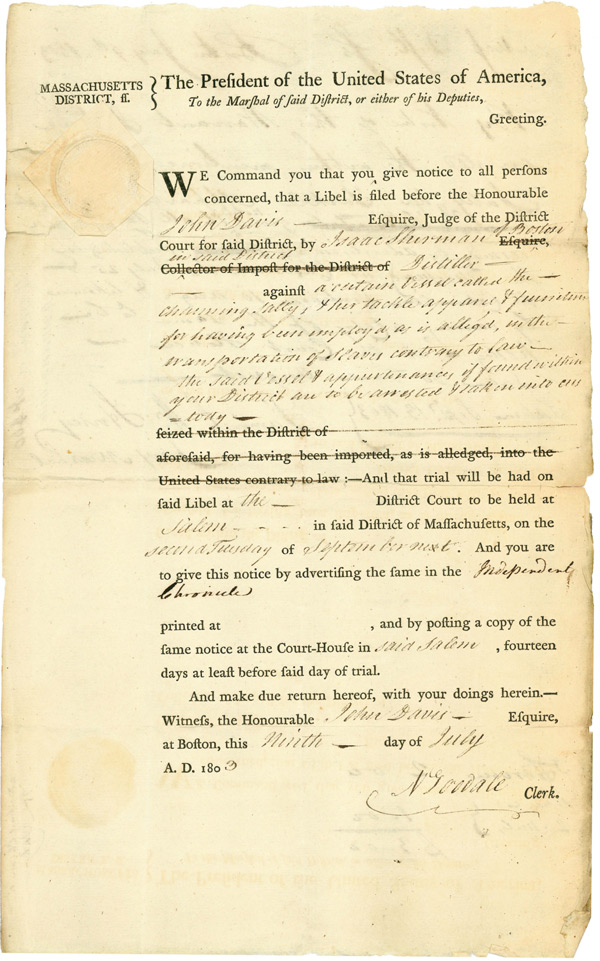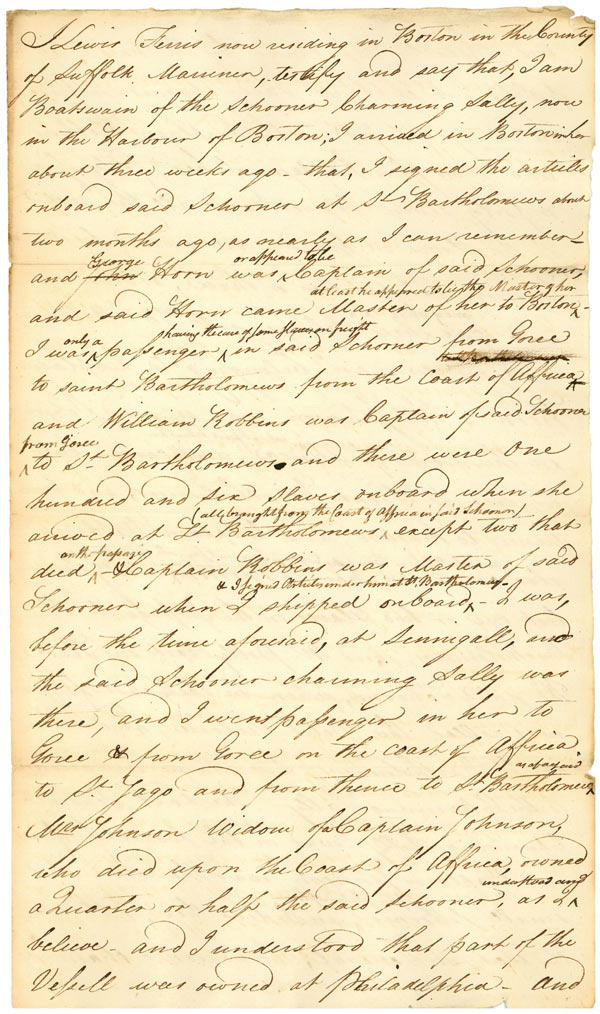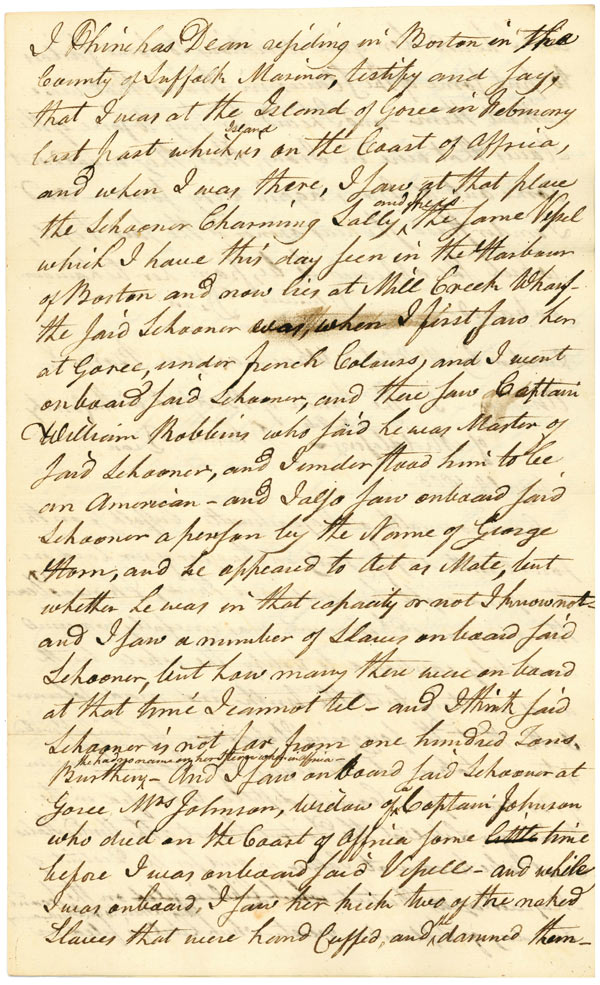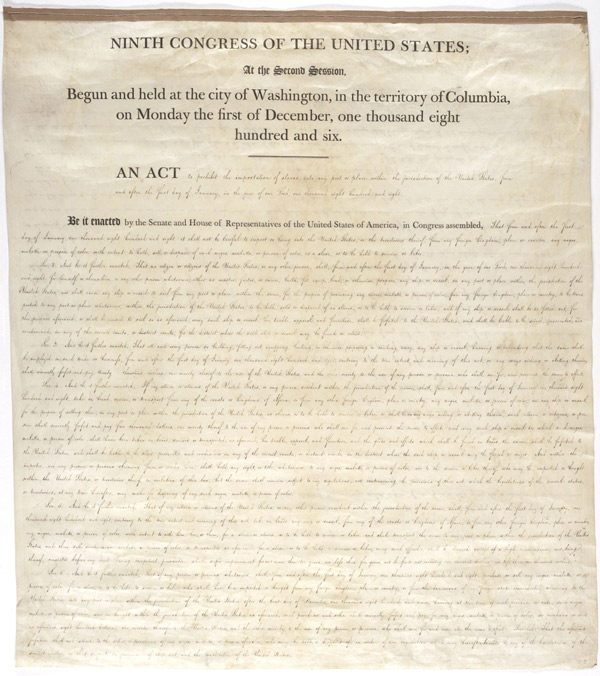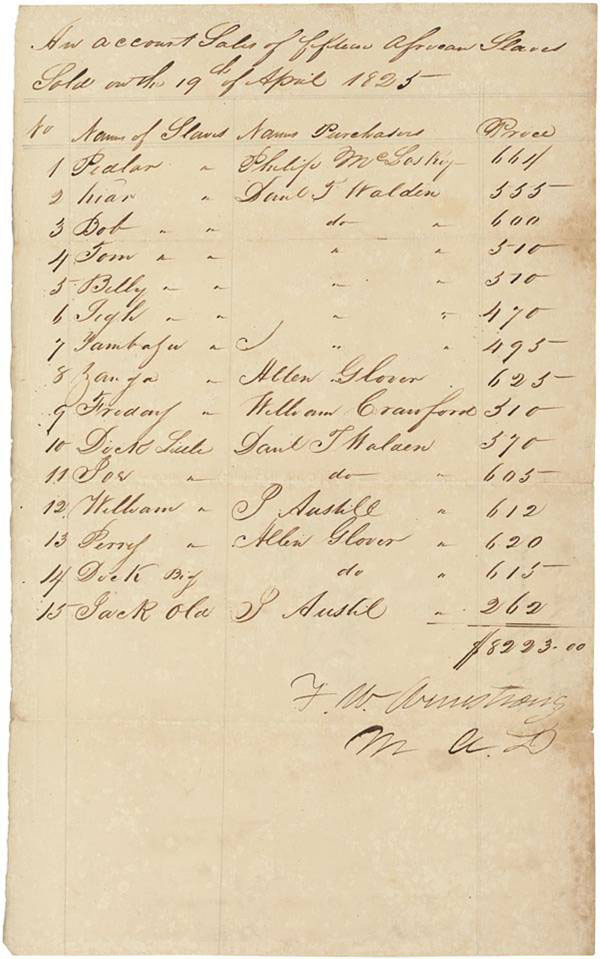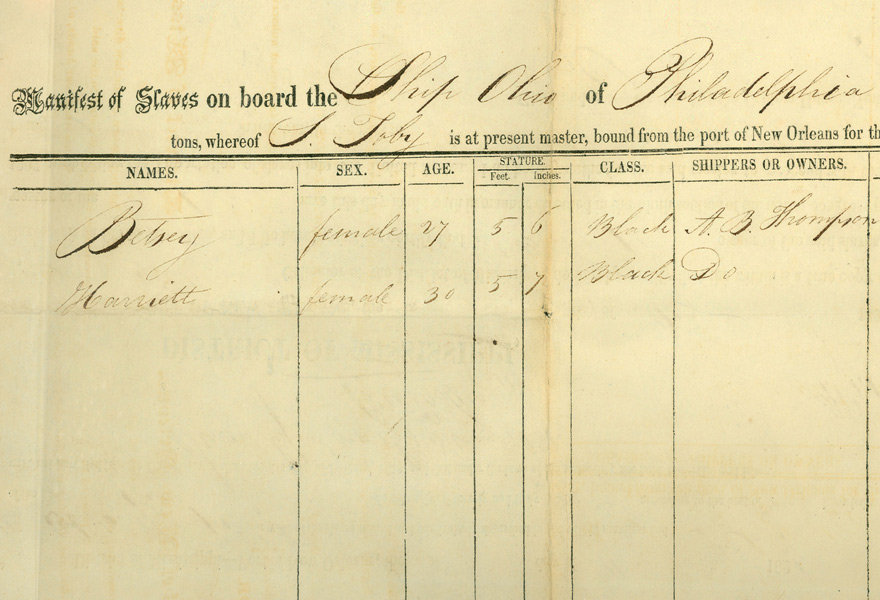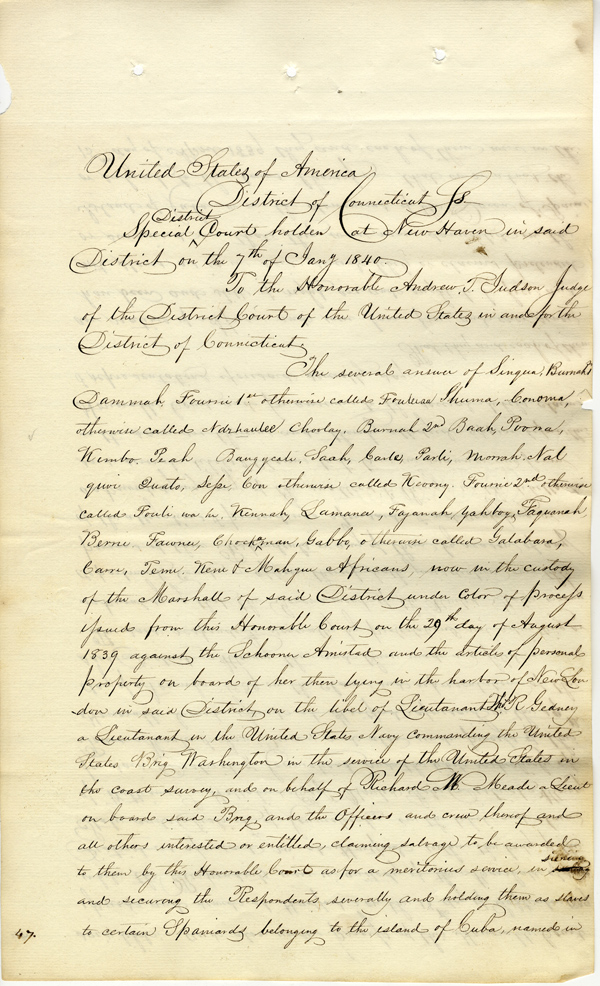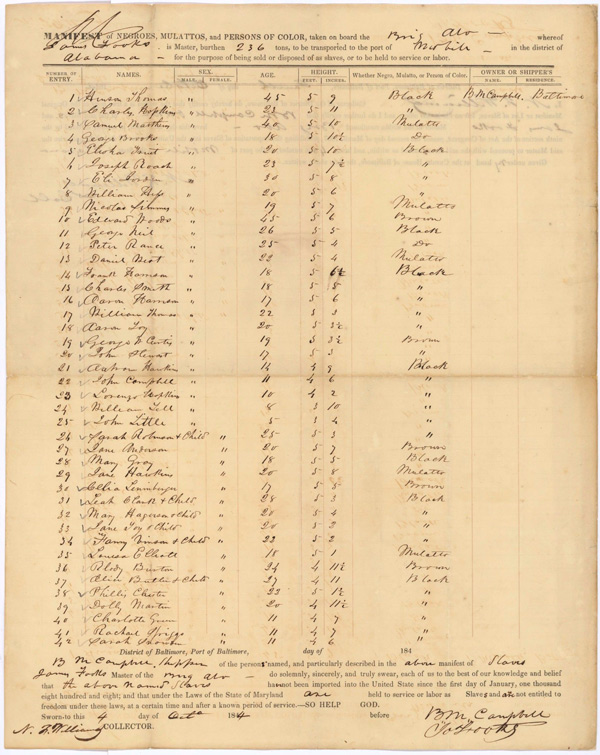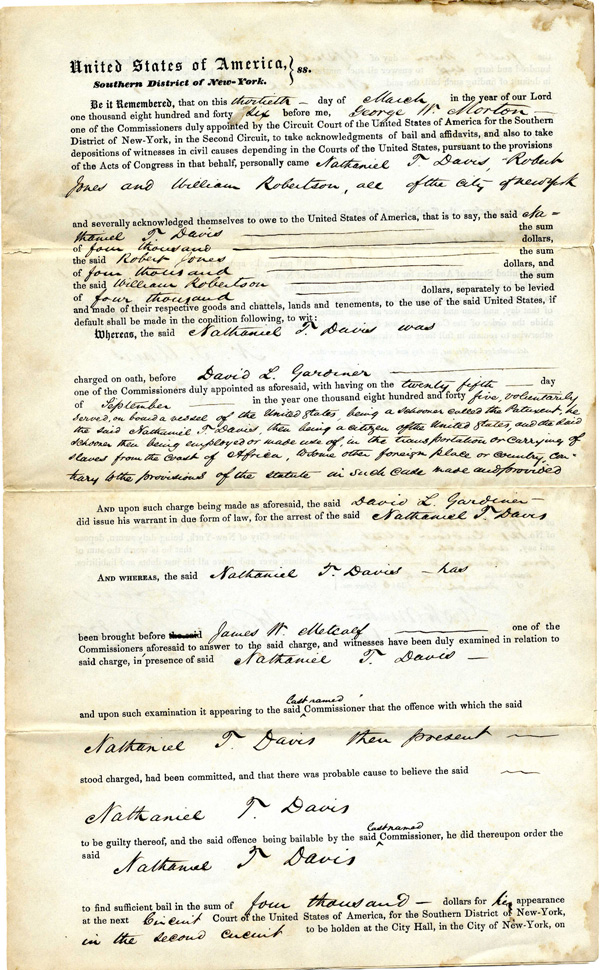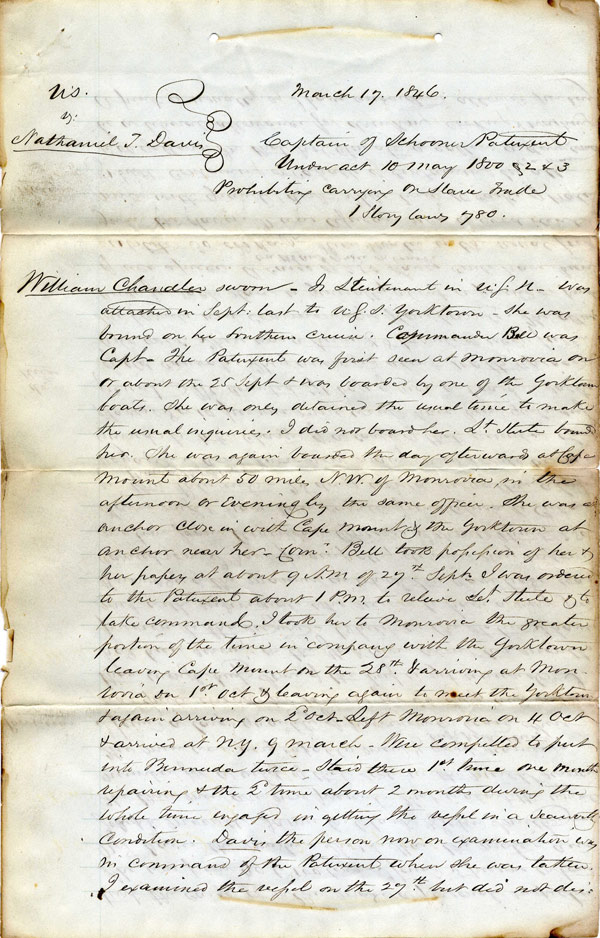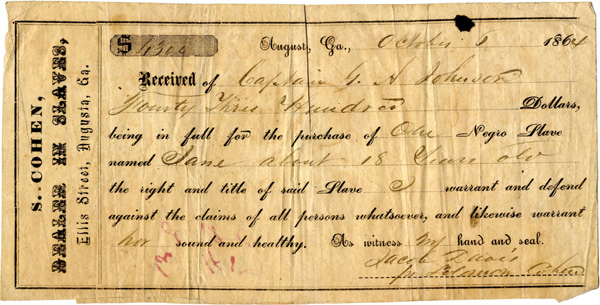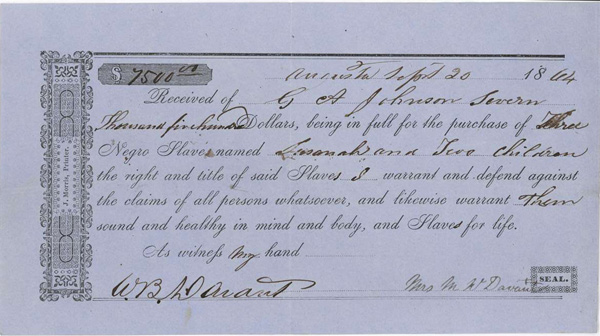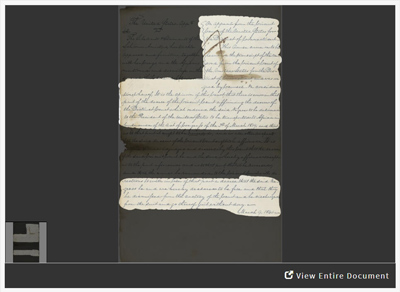
The Slave Trade
At the Constitutional Convention in 1787, delegates fiercely debated the issue of slavery. They ultimately agreed that the United States would potentially cease importation of slaves in 1808. An act of Congress passed in 1800 made it illegal for Americans to engage in the slave trade between nations, and gave U.S. authorities the right to seize slave ships which were caught transporting slaves and confiscate their cargo. Then the "Act Prohibiting the Importation of Slaves" took effect in 1808. However, a domestic or "coastwise" trade in slaves persisted between ports within the United States, as demonstrated by slave manifests and court records.
Related Primary Sources
Teaching Activities
U.S. v. Amistad: A Case of Jurisdiction on DocsTeach asks students to analyze specified passages from the Supreme Court's decision in United States v. Libellants of Schooner Amistad to explore the concept of jurisdiction and how a case travels through the Federal court system. Students will also interpret the Supreme Court's role in the judicial branch by connecting the document back to the United States Constitution, and ultimately decide if they agree with the Supreme Court's ruling in the case.
Find other teaching activities related to slavery on DocsTeach.
 Materials created by the National Archives and Records Administration are in the public domain.
Materials created by the National Archives and Records Administration are in the public domain.
